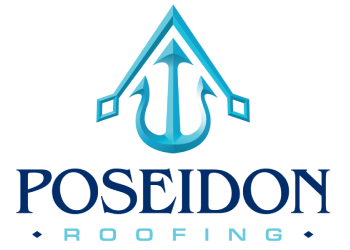Choosing the right roofing contractor is a critical decision that can significantly impact the safety and longevity of your home’s roof. Whether you need roof repairs or a complete replacement, you want a trusted and economic solution. At Poseidon Roofing, your go-to experts for Residential Roofing Services, we understand the importance of selecting the right roofing contractor. Here are some essential tips to guide you through this process.
1. Check for Proper Licensing and Insurance
The first step to finding a trusted roofing contractor is to ensure they are licensed and adequately insured. Licensing guarantees that the contractor meets the required standards and regulations. Insurance is equally crucial as it protects you and the contractor in case of accidents or property damage during the project.
2. Look for Local Roofing Contractors
Opt for a Local Roofing Company like Poseidon Roofing. Local contractors have a reputation to uphold within the community, making them more invested in your satisfaction. They are also more familiar with local weather patterns and building codes.
3. Check References and Reviews
Ask for references from past customers and take the time to read online reviews. This will give you insight into the contractor’s work quality and their ability to meet deadlines.
4. Evaluate Experience and Expertise
Experienced contractors are often a safer bet. They’ve likely encountered a range of roofing issues and can handle unexpected challenges effectively. Poseidon Roofing, for example, has a team of seasoned professionals known for their expertise.
5. Get Multiple Quotes
Don’t settle for the first estimate you receive. Get quotes from several contractors. This not only helps you compare prices but also gives you a sense of what’s reasonable for your project.
6. Inquire About Materials and Warranty
Discuss the materials the contractor plans to use for your project. A reliable contractor should be able to explain the options and recommend the best fit for your needs. Additionally, inquire about warranties, both for materials and workmanship. Poseidon Roofing offers warranties to ensure your investment is protected.
7. Communication is Key
Effective communication is vital throughout the roofing project. Ensure you can easily reach the contractor, and they are responsive to your questions and concerns.
8. Visit Completed Projects
If possible, visit some of the contractor’s completed projects. This gives you a firsthand look at the quality of their work and can help you make an informed decision.
Conclusion
Selecting the right roofing contractor is a crucial step in ensuring the safety and value of your home. Poseidon Roofing, recognized as the Best Residential Roofing Contractor, is your trusted partner for Residential Roofing Services. With our commitment to excellence, proper licensing, and a team of experienced professionals, we’re here to provide economic and top-tier roofing solutions.
For all your roofing needs and to learn more about our services, visit Poseidon Roofing (https://poseidonroof.com/roof-repair/). We’re ready to provide you with reliable and trusted roofing services.

